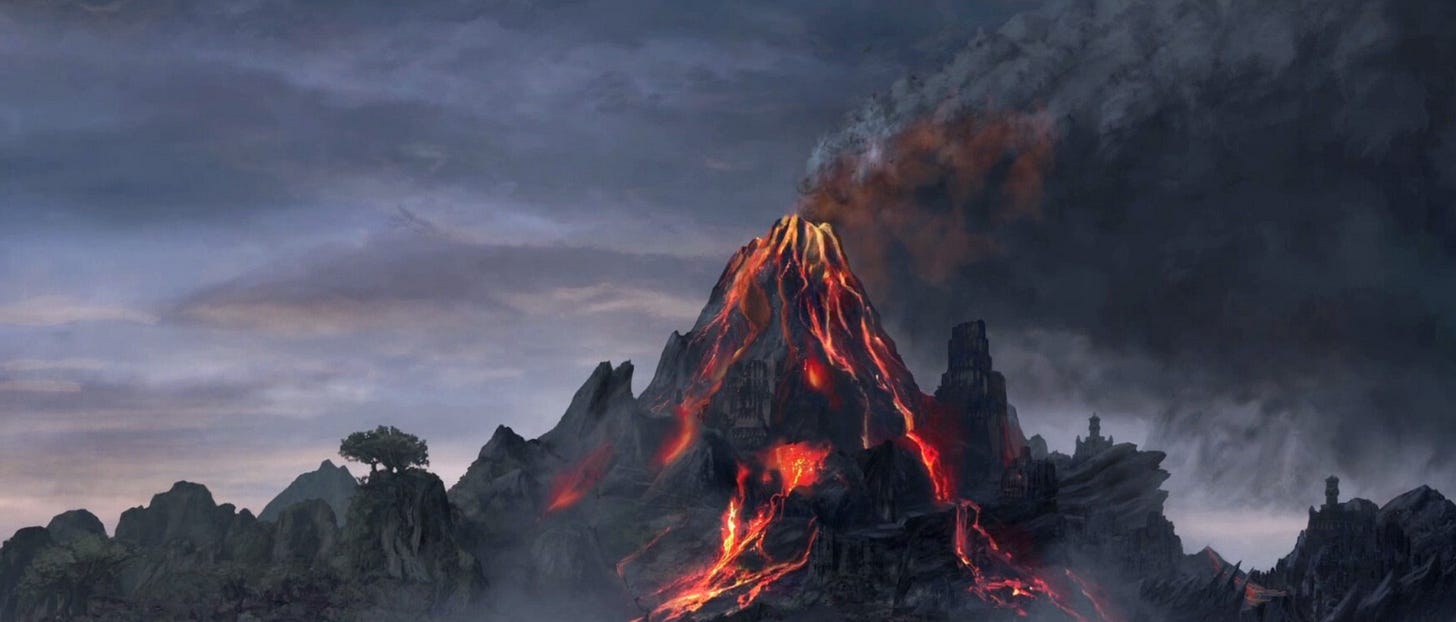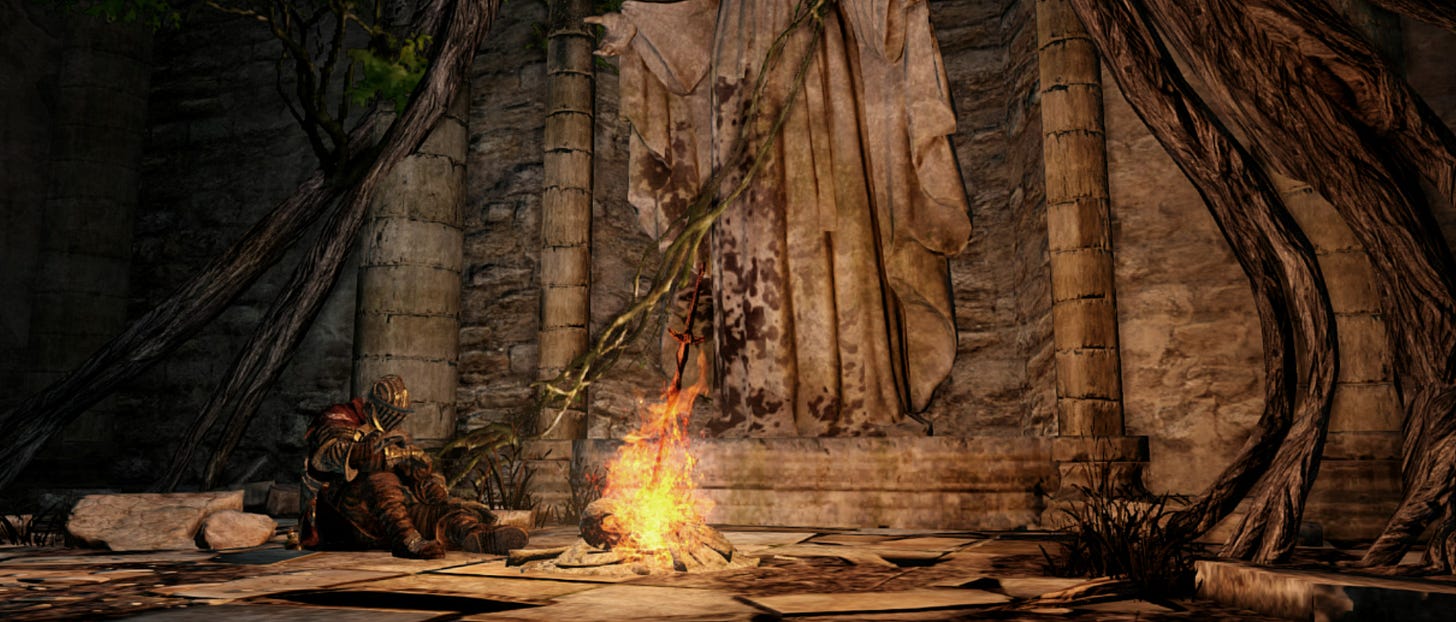The Game Dev’s Guide to Save Systems
Why your save system matters
Have you ever considered how your save system affects player behavior?
I didn’t, at least not until I released a demo. And the first major update I made to that demo? Changing the save system.
It’s something that directly shapes the player’s experience. Let them save anytime, and they won’t feel the tension of losing progress. Make it restrictive, and they’ll think twice before entering a dungeon.
As Dan and Mike say in their video essay on save systems, “The right save system with the right game can create a new genre.”
Yet, I feel like save systems don’t get nearly enough attention in game design discussions. So in this issue, let’s dive into some common save systems and see how they shape player behavior. Let’s go!
Common Save Systems and Their Effect on Player Behavior
From saving by using the toilet to letting players place their own save points, there are many creative save mechanics out there. While it’s impossible to cover them all in a single post, we can explore some of the most fundamental and widely used ones.
1. Freeform Save
Many games let you save whenever you want. Some may restrict this during critical moments, but others, like Divinity, even allow saving in the middle of combat.
This is ideal for narrative-focused games like Mass Effect, because let’s face it, none of us enjoy watching the same cutscenes over and over. There’s no real fear of loss in this system, so players tend to explore every corner and try more experimental strategies. Planted a bunch of barrels around the boss and accidentally blew yourself up too? No problem! Just reload and try again.
The flip side, of course, is how easily this system can be exploited. If you can save at any time, there’s no need to deal with the consequences of your actions. While this fits well with games like Divinity, which reward experimentation, in other genres it can completely erase any sense of challenge.
That’s why developers often design their way around it. In Pathologic 2, each time the player dies, they receive a permanent penalty like reduced max health or increased hunger. Reloading doesn’t help because the game alters all save files. Other games find the solution in allowing a single save file in hard modes.
2. Designated Save Points
Another common save system is saving only at specific points. The most well-known examples are Souls-like games and the Resident Evil series. These safe zones not only let you save your game but also manage your inventory, upgrade skills, and perform other tasks.
This increases the tension created by exploration. Taking risks becomes harder the farther you are from the last save point. At the same time, players start peeking into every corner, hoping to find the next one.
Placement of these save points is crucial. if they’re too close to each other, they lose their meaning; too far apart, and the difficulty can spike. Either way, this system is great at encouraging exploration.
One of the most creative uses of this system is in Alien: Isolation. You can only save at limited, fixed points, and the fun is that saving takes an annoyingly long time. Meanwhile, the Alien is still hunting you. So you can die while trying to save.
3. Consumable Resource
In some games, saving requires you to use a specific resource. For example, in the early Resident Evil titles, you need an Ink Ribbon item to save. Another well-known example is Kingdom Come: Deliverance, where saving requires the Savior Schnapps potion.
This makes you think twice before saving. What if a more critical moment comes later and you’re out of save items? What if you lose hours of progress? This increases tension (a lot!) and requires a balanced risk-reward system. Where and how often you place these items matters too (let’s not forget the joy of finding a new save item after a long stretch.)
This is one of the riskiest save systems out there imo. There’s a reason one of the most downloaded KCD mods is the one that lets you save anytime. No one likes losing hours of progress, and casual players usually don’t want to stress over mechanics like this.
Final Words
To conclude, a good save system reinforces other aspects of the game. It shapes how players perceive risk and make decisions.
Many games use a combination of these systems. In Herald of the Mists, for example (which I’ve heard great things about hehe), you need a specific item to save, but you can also save by camping or praying in front of a statue of the in-game deity.
How does saving work in your game? And why did you choose that approach?
You Might Also Like
Me
I’ve been busy plotting the overall story of Herald of the Mists. Even though I’ve more or less figured out how it ends, I still haven’t fully worked out how to get there. At the same time, I’ve been tinkering with another small side project whenever I can find the time. I’m not sure if that one will go anywhere yet. I’ll share more details in the coming months if I stick with it.
Playing: Blue Prince. I don’t think I’ve ever played a game that’s both so relaxing and so infuriating at the same time. It’s so relaxing to put on your headphones, listen to its soothing music, and explore while taking notes. On the other, one small thing can make you miss your goal entirely and start over. It’s maddening. And I love it. It’s definitely something special.
Reading: Joe Abercrombie’s new book, The Devils. I started it as soon as it came out, since he’s one of my favorite authors. This one isn’t set in the First Law universe. Instead, it takes place in an alternate Europe filled with human-eating elves and dark magic-wielding churches.
Listening:
Thanks for reading!
And that’s it from today’s issue of GameDev’s Journey. I hope you enjoyed it and found it useful. If you did, please like and leave a comment. Reach out for suggestions, objections, questions, or just say hi.
But regardless, thank you so much for reading, and have a great game dev journey!






Nice article... All 3 types of saves work well for specific reasons. I also like how you can combine them. Cool to think about and find other systems for new game applications :)
Keep it up!
This is most insightful article about save system I ever read. Thanks for inspiration!